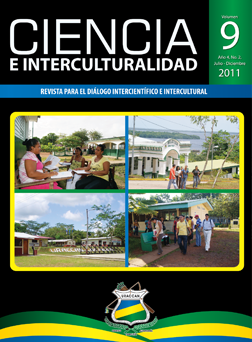Yield of two improved bean varieties, broadcast by spice, in Moss Pam, Waspam, Río Coco
Abstract
This article presents the agronomic behavior of the beans (Phaseolus vulgaris L.) in two varieties: (DOR-364 and M-46), that were established through the analysis of two planting methods (broadcast and handspike) to measure the production. The experiment was conducted in the academic farm of Snaky/URACCAN, located in the community of Moss Pam, municipality of Waspam, Rio Coco, North Autonomous Atlantic Region (RAAN). The bean crop is of great importance in the lives of indigenous communities, since just as the rice, it constitutes the most important grain in the family’s diets. It should be noted that the indigenous communities of the RAAN basically used two methods of planting (broadcast and handspike), however, productions is always low, so is necessary to make the study with the conditions that have been described. A bifactorial design in randomized complete blocks was used, where the factor A: is equivalent to the two varieties of beans (DOR-364 and H-46), and factor B, is equivalent to two methods of planting (broadcast and handspike). The evaluation was made on the morphometric characteristics presented in the vegetative and reproductive phase of the crop. The information processing was done with the statistical program InfoStat, making an investigation from the analysis of ANAVA and Kruskal-Wallis test. The results showed high germination viability (95%), with statistical differences between treatments in the variables: height and diameter, in the vegetative stage. In the reproductive stage the variables: number of pods/plants and seeds/pods/plants, were the one that presented statistical differences between treatments, contrary to the variables: number of flowers/plants and length of pods/plants, that showed no differences. Finally, the ANAVA with 95 percent of reliability found differences in the variable: performance. Is recommended to plant the variety H-46 using the broadcast method and that DOR-364 variety be planted by handspike, because it present the best production with 77.63 and 71.33 qq/mz.
Downloads
El autor mantiene los derechos morales y permite la cesión gratuita, exclusiva y por plazo indefinido de sus derechos patrimoniales de autoría a la Universidad de las Regiones Autónomas de la Costa Caribe Nicaraguense (URACCAN).






